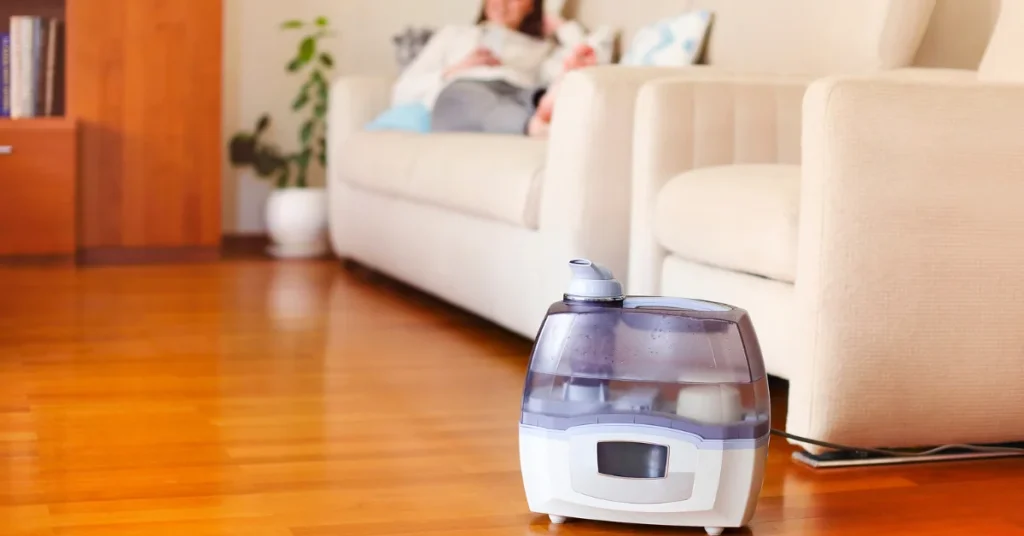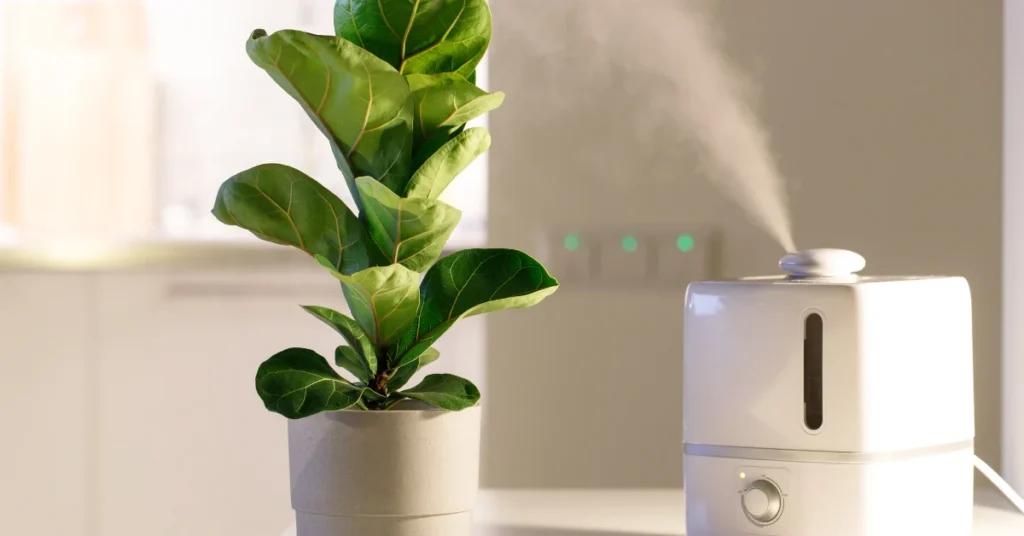Ever wondered why your humidifier isn’t making your room feel cozy as quickly as you’d hoped? You’re not alone. Many people expect immediate results when using a humidifier, but it can take some time before you really start feeling the difference. Maintaining the right indoor humidity level, especially in winter or dry climates, is crucial for your comfort and health. Dry skin, sinus problems, and even those static shocks you get from touching metal surfaces—all of these can improve with the right amount of moisture in the air.
So, how long for a humidifier to work? Let’s dive in to explore the factors that affect this and how you can get your humidifier to work faster for a more comfortable home environment.
How Humidifiers Work: The Basics

Humidifiers are simple but powerful devices that add moisture to the air, creating a more comfortable and healthy indoor environment. But how exactly do they do that?
There are a few different types of humidifiers, and each works a little differently:
- Cool Mist Humidifiers: These use a fan to evaporate water and release a cool, fine mist into the air. They’re great for larger spaces and are often used to relieve allergies or cold symptoms.
- Warm Mist Humidifiers: Also known as steam vaporizers, these heat water to create steam, which then cools slightly before being released into the room. Warm mist models are quieter and can kill bacteria and allergens through the heating process.
- Ultrasonic Humidifiers: These use ultrasonic vibrations to create a fine mist of water droplets that are dispersed into the air. They’re energy-efficient and usually very quiet.
- Evaporative Humidifiers: These use a wick filter that absorbs water and then blows air through the filter to evaporate the moisture into the room.
Each type of humidifier works to balance the moisture in your air, but they vary in terms of speed and efficiency. Some might take longer than others to bring your room to that ideal humidity level—especially if you’re starting from a very dry environment.
Factors That Affect How Fast a Humidifier Works

While all humidifiers aim to add moisture to the air, the time it takes for them to be effective can vary. Several factors can impact how quickly a humidifier works in your space:
Room Size: A small bedroom will humidify faster than a large living room. Larger spaces require more moisture to reach optimal humidity levels, so if you’re using a humidifier in a big area, expect it to take longer.
Current Humidity Level: If you’re starting with very dry air—let’s say around 20% humidity—it’s going to take more time for the humidifier to work. On the other hand, if your room is already somewhat humid, the humidifier will reach ideal levels (usually between 30% and 50%) much faster.
Type of Humidifier: As mentioned earlier, not all humidifiers are created equal when it comes to speed. Warm mist humidifiers can humidify a room more quickly than cool mist models because they produce steam. Ultrasonic humidifiers are also known for working quickly due to their fine mist, while evaporative humidifiers tend to take more time.
External Factors: Things like airflow, open windows, and heating systems can impact the humidifier’s efficiency. For example, if the room has a lot of airflow or an open window, the moisture will escape, making it harder for the humidifier to keep up. Similarly, dry heat from radiators or space heaters can speed up moisture loss.
By considering these factors, you can better understand why your humidifier might be taking longer than expected—or how you might speed up the process!
General Timelines for Different Humidifiers
Now that you know the factors influencing how fast a humidifier works, let’s look at the general timelines for different types of humidifiers. Keep in mind that these are averages and can vary based on room size and initial humidity levels.

Cool Mist Humidifiers:
- Timeline: 4–6 hours for a medium-sized room (e.g., 300–500 square feet).
- These are great for larger areas but can take longer to reach optimal humidity, especially in spaces with very dry air. However, they are often the most affordable option and can run for longer periods.
Warm Mist Humidifiers:
- Timeline: 2–4 hours for a medium-sized room.
- Warm mist humidifiers work faster than cool mist models because they emit steam, which disperses more easily into the air. This makes them ideal if you need a quicker solution, but they may use more energy and require regular cleaning to prevent mineral buildup.
Ultrasonic Humidifiers:
- Timeline: 1–3 hours for small to medium rooms.
- Ultrasonic humidifiers are among the fastest, thanks to their use of vibrations to create a fine mist. They are efficient, quiet, and suitable for bedrooms or spaces where you want to avoid noise. Because of their speed, these models are ideal for quickly raising humidity levels.
Evaporative Humidifiers:
- Timeline: 5–8 hours for medium rooms.
- These tend to be slower since they rely on natural evaporation to release moisture into the air. However, they are efficient in maintaining steady humidity levels once they reach the target.
It’s important to match the right humidifier with your needs. If you’re trying to humidify a large space quickly, multiple units or a higher-capacity model might be needed to get the job done faster.
Tips to Make Your Humidifier Work Faster

If you want your humidifier to work more efficiently, there are a few strategies you can try. These tips can help speed up the process and ensure your space becomes more comfortable sooner:
Optimize Placement: Place your humidifier in the center of the room or close to where you spend the most time. Avoid corners or spots where airflow might be obstructed. By placing it in an open area, the moisture can spread more evenly and quickly.
Keep Doors and Windows Closed: Open windows and doors allow moisture to escape, making it harder for your humidifier to maintain a consistent humidity level. Keep them closed to trap the humidity inside and speed up the process.
Use Multiple Humidifiers for Larger Spaces: In larger rooms or open-concept areas, a single humidifier may not be enough. Using two or more smaller units spread across the space can humidify the room faster than relying on just one.
Set the Humidifier on a Higher Setting: If your humidifier has multiple speed settings, start with the highest setting to get moisture into the air quickly. Once you reach the desired humidity level, you can lower the setting to maintain it without over-humidifying the room.
Regularly Clean the Humidifier: A clean humidifier works more efficiently. Dust and mineral buildup can reduce the machine’s ability to disperse moisture effectively. Be sure to follow manufacturer instructions on how often to clean your unit to keep it running at its best.
Monitor the Humidity Levels: Use a hygrometer to keep track of your room’s humidity. This will help you determine when to adjust your humidifier’s settings or make changes to ensure the room stays within the optimal range of 30–50%.
These small adjustments can make a big difference in how fast your humidifier works, ensuring your room reaches ideal humidity levels in no time.
How to Tell When Your Room is Fully Humidified

It’s important to know when your room has reached the ideal humidity level so you don’t overdo it. Too much moisture can lead to problems like mold growth or dust mites, which isn’t what anyone wants! Here’s how you can tell when your space is perfectly humidified:
Use a Hygrometer: A hygrometer is a simple tool that measures the moisture in the air. For optimal comfort and health, indoor humidity should fall between 30% and 50%. If you notice your room is consistently hitting this range, your humidifier has done its job.
Comfort Signs: You’ll feel it! When the air has the right amount of humidity, you’ll notice improvements in your comfort. Dry skin will feel less irritated, breathing becomes easier, and static electricity (those annoying little shocks) will disappear.
No More Dry Air Symptoms: If the dryness you were experiencing—like dry throat, chapped lips, or nasal congestion—has improved, it’s a good sign your room has reached a balanced humidity level.
Condensation on Windows: Be cautious of condensation forming on windows or walls. This can indicate that the air is too humid. If you see this, it’s time to dial back your humidifier or turn it off for a while.
Monitor Plants and Furniture: Plants are great natural indicators. If your houseplants start to perk up and grow faster, it’s a sign that they’re getting the right amount of moisture. On the other hand, if wooden furniture starts warping or feeling damp, it may mean the room is over-humidified.
Knowing when your room is fully humidified allows you to maintain the perfect balance for comfort and health without going overboard.
Frequently Asked Questions(FAQ)
Can I run my humidifier all night?
Yes, running your humidifier all night is generally safe and can help maintain a comfortable humidity level while you sleep. Just make sure to use a clean humidifier and monitor the humidity levels so it doesn’t become too damp, which could encourage mold or dust mites.
How do I maintain my humidifier for the best performance?
Regular cleaning is key. Follow the manufacturer’s guidelines to clean the tank and components, which can prevent mold and mineral buildup. Change the water daily and deep clean your humidifier once a week to ensure it runs efficiently and lasts longer.
How much time should I give a humidifier to humidify a room?
For most medium-sized rooms, it typically takes between 2–8 hours depending on the type of humidifier, room size, and initial dryness of the air. Using a hygrometer will help track progress and ensure the room reaches the desired humidity level.
Do different humidifiers work better for specific conditions?
Yes. Warm mist humidifiers may be better for respiratory issues like colds or allergies because the heat can kill bacteria and allergens in the air. Cool mist humidifiers are great for year-round use and work well in large spaces or for those looking for quieter operations.
To sum it up, how long it takes for a humidifier to work depends on a variety of factors—room size, type of humidifier, and starting humidity level all play a role. While cool mist and evaporative humidifiers might take a bit longer, warm mist and ultrasonic models are quicker options. With the right setup and placement, you can speed up the process and start enjoying the benefits of balanced air faster.
Remember, the ideal humidity range for comfort and health is between 30% and 50%, and tools like a hygrometer can help you track when your room has reached that sweet spot. By keeping your humidifier clean and following the tips provided, you’ll maximize its efficiency and maintain a healthy indoor environment all year round.




